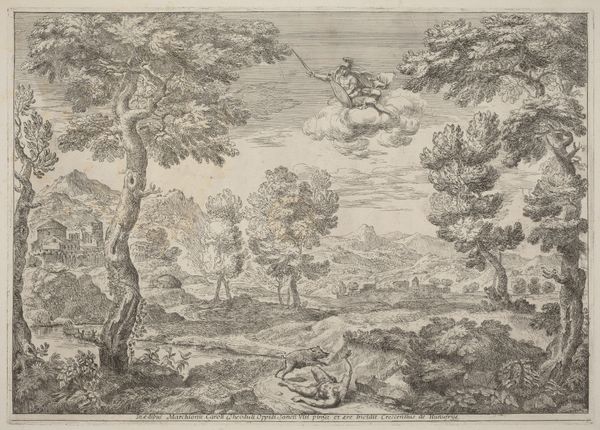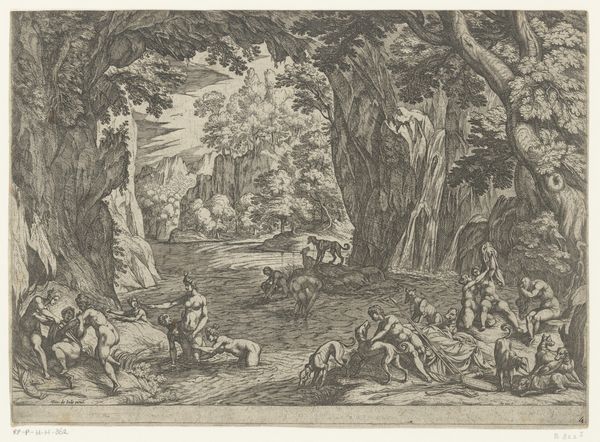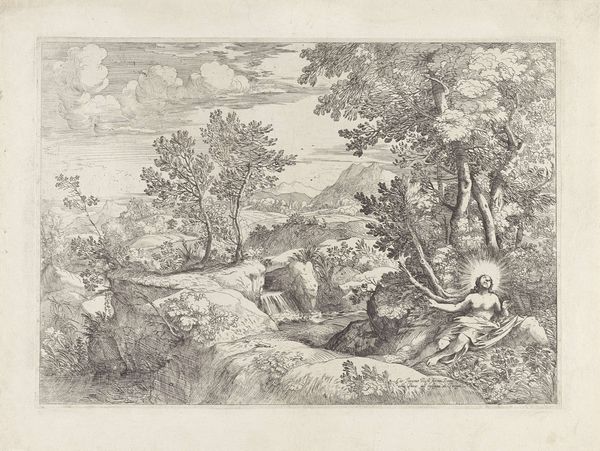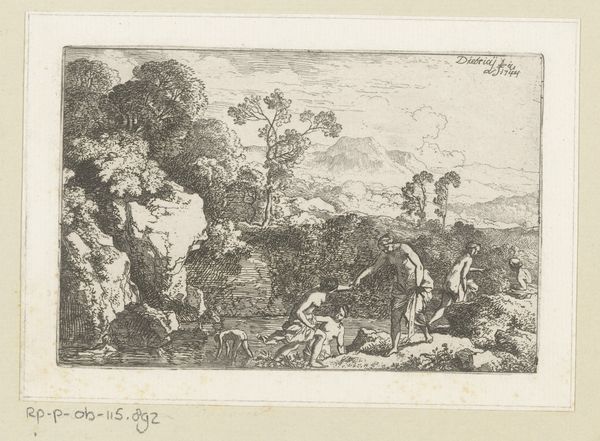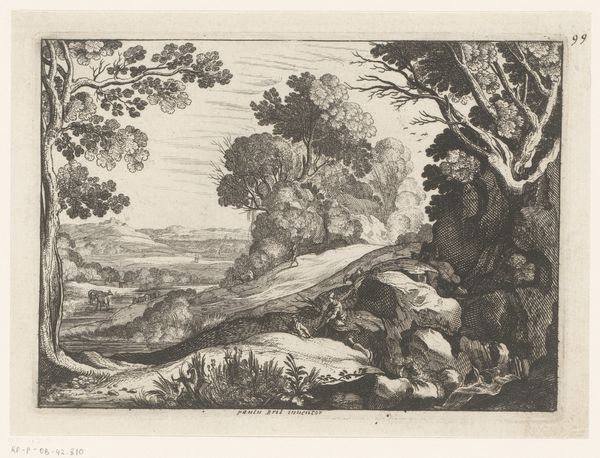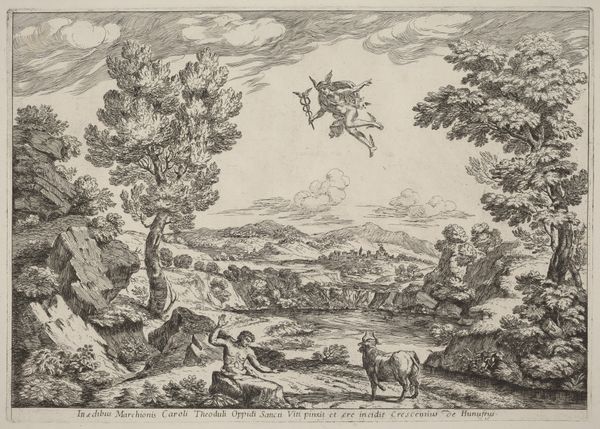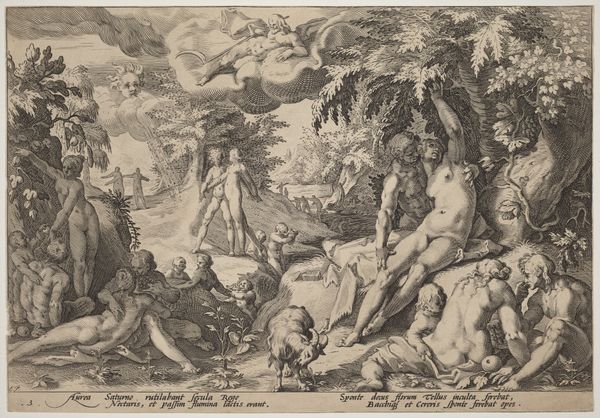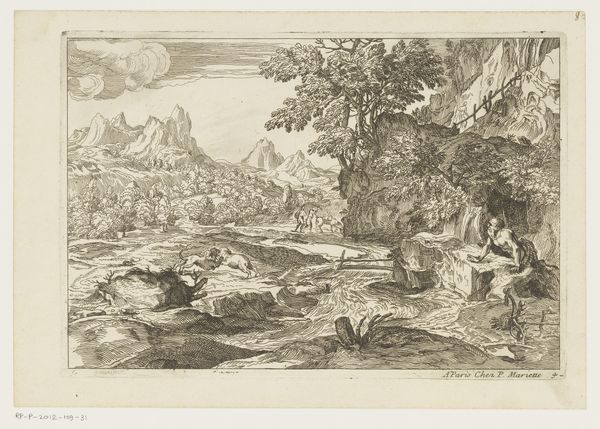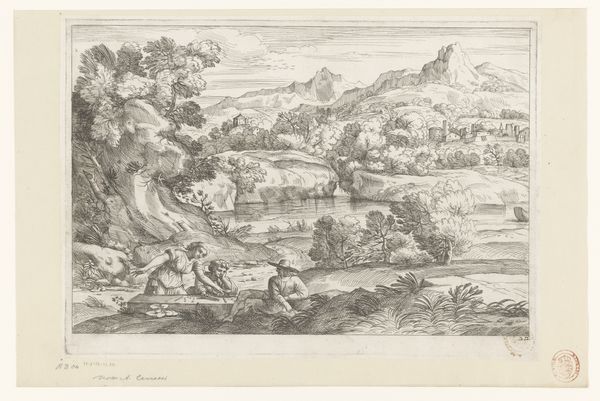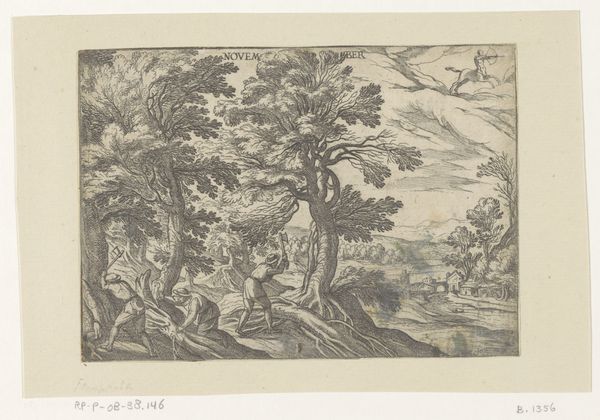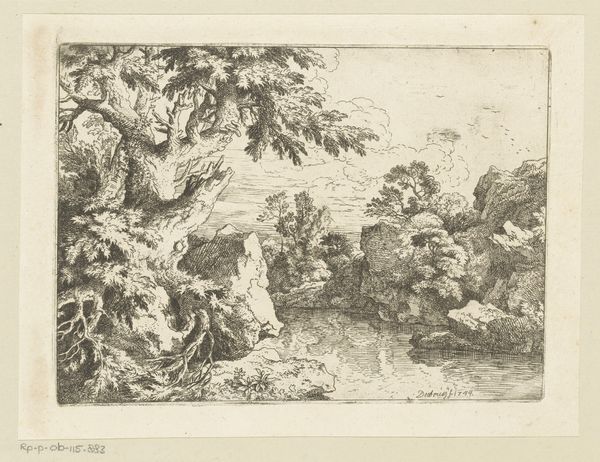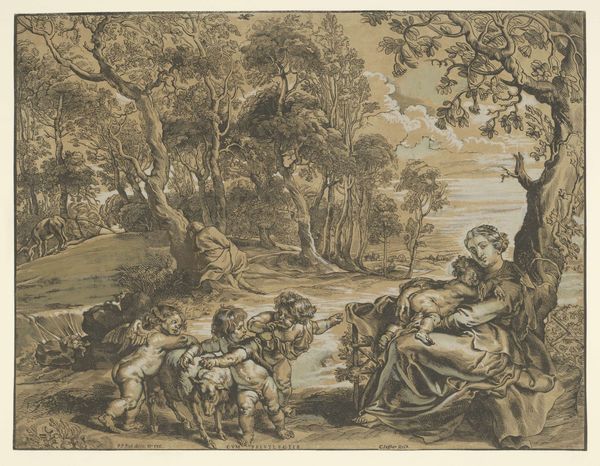
Venus zittend op een rots, vergezeld door drie putti 1742
0:00
0:00
print, engraving
#
allegory
#
baroque
# print
#
landscape
#
history-painting
#
nude
#
engraving
Dimensions: height 189 mm, width 274 mm
Copyright: Rijks Museum: Open Domain
Christian Wilhelm Ernst Dietrich created this print of Venus attended by putti. Look closely, and you’ll see the goddess of love and beauty is accompanied by three putti, winged cherubs who symbolize divine love. But observe what is happening in the upper left corner of the print: one putto is being lifted by a group of doves, a highly symbolic image. Doves, traditionally associated with Venus, represent peace and love. However, in some contexts, doves can also symbolize the flight of the soul or, perhaps more darkly, vanity. In a similar vein, we see putti in classical art, often representing Cupid, the god of desire, love, and attraction. The Greeks knew him as Eros. In ancient Pompeii, images of Cupid frequently decorated homes, underscoring the ubiquity of love, but also lust, in daily life. Here, Dietrich integrates them into a scene invoking feelings that resonate through the ages. The putti, in their playful innocence, engage viewers on a deep, subconscious level. This visual language and symbol-laden tableau reveals how cultural memory and subconscious processes influence the production and interpretation of art. From antiquity to the 18th century and beyond, we witness these symbols resurface and evolve.
Comments
No comments
Be the first to comment and join the conversation on the ultimate creative platform.
